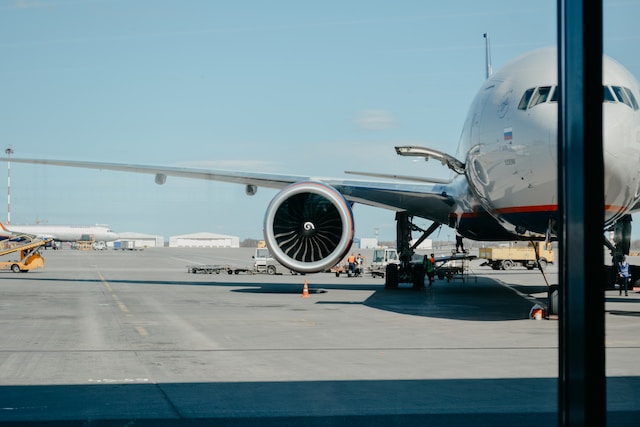Risk Management in Aviation Logistics: Mitigating Challenges for Seamless Operations
As a trusted partner to the United States Government, aviation logistics consists of and involves the complex coordination of various activities to ensure the timely and efficient movement of goods and movement of people by way of air.
With increased demand for faster, more expeditious forms of transportation, air transportation has grown exponentially and therefore the logistics sector faces multiple challenges that can disrupt operations and even sometimes result in jeopardizing safety.
To effectively manage the risks and ensure that operations are seamless in the aviation sector we pride ourselves along with being a trusted partner to the US Government in ensuring our operations are seamless.
Understanding the challenges allows us to mitigate the risks:
Weather disruptions are one of the largest, natural challenges that we face. Adverse weather conditions which include storms, fog and or strong winds can greatly impact the flight schedule and logistics operations therefore impacting on delivery of goods and services. Delays or canceled flights due to weather conditions pose a significant challenge for airlines and logistic companies, which therefore creates a ripple effect by disrupting supply chains and resulting in possible increased costs.
Regulatory Compliance, the airspace and aviation industry is regulated to ensure that safety and security is maintained throughout transportation. Compliance with various regulations, including compliance with the aviation authorities and customs agencies adds a new dimension of complexity of logistical operations. Should a company not comply with the regulations the result could be suspension of operations, fines and or penalties, depending on the non-compliance.
Supply Chain Vulnerabilities, air transportation logistics due to the vast distances that are often traveled there is great reliance on a global network of suppliers, manufacturers as well as service providers. Disruptions from the supply chain planning such as supply shortages, issues with labour such as strikes and or political tensions will have a significant impact on the available resources and services. Therefore if there are tensions or other shortages this will result in delays and increased risks.
Security Threats, unfortunately airplanes and airports are often at risk and therefore there is a need for greater security to decrease the threats or limit the threats which may include but does not limit, terrorism, sabotage and cargo theft. Ensuring and managing security risks in aviation logistics requires robust techniques and adapting protocols, screening procedures and collaboration with law enforcement agencies to ensure the safety and integrity of operations. As a trusted partner to the government we ensure that we are continuously up to date and monitoring security risks to ensure seamless operations.
How do we mitigate risks:
Planning in advance:
It's essential to be proactive and plan and ensure you monitor and check the weather forecast ensuring the necessary steps are taken to mitigate the impact of weather disruptions and other unforeseen events. As a logistics company we utilize advanced weather forecasting technologies and predictive analytics to anticipate potential disruptions and we adjust schedules and routes in accordance with the risks that we have become aware of.
Training and Compliance programs:
Training programs ensures that the personnel within the team are well equipped to adhere to the regulatory requirements and ensure that the best practices are followed and adhered to. Training sessions are held for safety protocols, security procedures as well as regulatory compliance helps to mitigate risks and enhance operational efficiency.
Diverse suppliers and Routes:
Taking a proactive approach regarding suppliers and routes results in limiting the supply chain vulnerabilities. Maintaining and ensuring that we have relationships with multiple suppliers and having alternative routes should there need to be a change in routing, allowing and providing for an adaptive approach to minimize the impact that it may have on operations.
Investing in Security Infrastructure:
Investing in surveillance systems, access control mechanisms and cargo screening technologies as well as enhancing the security of airports and logistic facilities ensuring that security threats are minimized.
Using technology for seamless operations:
Automation and digitization ensures efficiency and reduces risks in aviation logistics and the use of blockchain technology offers enhanced transparency and allows one to trace the goods, therefore blockchain ensures the integrity of data and reduces the risk of fraud or tampering. Implementing blockchain solutions in aviation enhances trust and accountability across the supply chain.
Effectively managing the supply chain and ensuring the risks are mitigated is an essential core element in ensuring there is a seamless operation of aviation logistics. By understanding and utilizing our partners to mitigate the risks associated with weather disruptions, regulatory compliance, supply chain vulnerabilities and security issued, we are able to maintain operational resilience and deliver goods safely and efficiently and that proves why we are a trusted partner to the US government.

